
Keywords: driving X

|
CRISPR-Cas9 effectors facilitate generation of single-sex litters and sex-specific phenotypesC. Douglas, V. Maciulyte, J. Zohren, D. M. Snell, S. K. Mahadevaiah, O. A. Ojarikre, P. J. I. Ellis and J. M. A. Turner, Nature Communications, 12:6926. 2021.
Animals are essential genetic tools in scientific research and global resources in agriculture. In both arenas, a single sex is often required in surplus. The ethical and financial burden of producing and culling animals of the undesired sex is considerable. Using the mouse as a ... Keywords: b chromosomes, driving X, driving y, gene drive reviews, gene drive synthetic, homing endonuceases, meiotic drive, segregation distorter, toxin antidote |
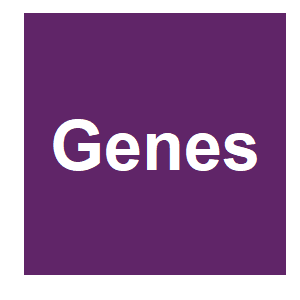
|
Flavors of Non-Random Meiotic Segregation of Autosomes and Sex ChromosomesF. Pajpach, T. Wu, L. Shearwin-Whyatt, K. Jones and F. Grützner, Genes, 12. 2021.
Segregation of chromosomes is a multistep process occurring both at mitosis and meiosis to ensure that daughter cells receive a complete set of genetic information. Critical components in the chromosome segregation include centromeres, kinetochores, components of sister chromatid ... Keywords: b chromosomes, driving X, driving y, gene drive reviews, gene drive synthetic, homing endonuceases, meiotic drive, segregation distorter, toxin antidote |

|
Autosomal suppression and fitness costs of an old driving X chromosome in Drosophila testaceaG. Keais, S. Lu and S. Perlman, Journal of Evolutionary Biology, 2020.
Driving X chromosomes (XDs) are meiotic drivers that bias their own transmission through males by killing Y-bearing gametes. These chromosomes can in theory spread rapidly in populations and cause extinction, but many are found as balanced polymorphisms or as ?cryptic? XDs shut ... Keywords: b chromosomes, driving X, driving y, gene drive reviews, gene drive synthetic, homing endonuceases, meiotic drive, segregation distorter, toxin antidote |

|
Fitness consequences of a non-recombining sex-ratio drive chromosome can explain its prevalence in the wildDyer, K. A. and D. W. Hall, Proceedings of the Royal Society B: Biological Sciences, 286:20192529. 2019.
Understanding the pleiotropic consequences of gene drive systems on host fitness is essential to predict their spread through a host population. Here, we study sex-ratio (SR) X-chromosome drive in the fly Drosophila recens, where SR causes the death of Y-bearing sperm in male ... Keywords: b chromosomes, driving X, driving y, gene drive reviews, gene drive synthetic, homing endonuceases, meiotic drive, segregation distorter, toxin antidote |
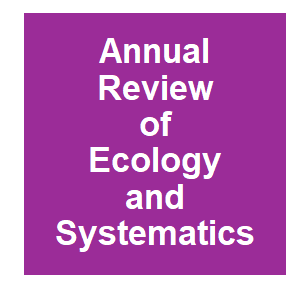
|
Genetic Control of MosquitoesAlphey, L., Annual Review of Entomology, 59:205-224. 2019.
Genetics can potentially provide new, species-specific, environmentally friendly methods for mosquito control. Genetic control strategies aim either to suppress target populations or to introduce a harm-reducing novel trait. Different approaches differ considerably in their ... Keywords: b chromosomes, driving X, driving y, gene drive reviews, gene drive synthetic, homing endonuceases, meiotic drive, segregation distorter, toxin antidote |

|
A Y-chromosome shredding gene drive for controlling pest vertebrate populationsProwse, TAAA, F.; Cassey, P.; Thomas, P.; Ross, J. V., eLife, 8:19. 2019.
Self-replicating gene drives that modify sex ratios or infer a fitness cost could be used to control populations of invasive alien species. The targeted deletion of Y sex chromosomes using CRISPR technology offers a new approach for sex bias that could be incorporated within ... Keywords: b chromosomes, driving X, driving y, gene drive reviews, gene drive synthetic, homing endonuceases, meiotic drive, segregation distorter, toxin antidote |
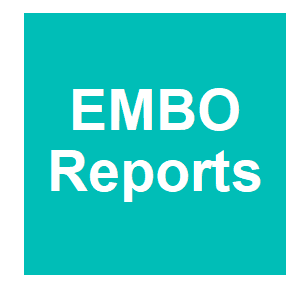
|
A genetic system for biasing the sex ratio in miceYosef, IEB, Liat; Globus, Rea; Shlomovitz, Inbar; Munitz, Ariel; Gerlic, Motti; Qimron, Udi, EMBO reports, 20:e48269. 2019.
Biasing the sex ratio of populations of different organisms, including plants, insects, crustacean, and fish, has been demonstrated by genetic and non-genetic approaches. However, biasing the sex ratio of mammalian populations has not been demonstrated genetically. Here, we ... Keywords: b chromosomes, driving X, driving y, gene drive reviews, gene drive synthetic, homing endonuceases, meiotic drive, segregation distorter, toxin antidote |

|
Genetic manipulation of sex ratio in mammals: the Reaper comes for MickeySmanski, MJZ, David, EMBO reports, 20:e48577. 2019.
In most animals, sexual reproduction results in a 1:1 ratio of females to males. For several sectors of agriculture, for example, milk or egg production, only a single sex is needed. Biasing the sex ratio so that only offspring of the desired sex are produced has the potential to ... Keywords: b chromosomes, driving X, driving y, gene drive reviews, gene drive synthetic, homing endonuceases, meiotic drive, segregation distorter, toxin antidote |

|
Gene drive to reduce malaria transmission in sub-Saharan AfricaBurt, AC, Mamadou; Crisanti, Andrea; Diabate, Abdoulaye; Kayondo, Jonathan K., Journal of Responsible Innovation, 5:S66-S80. 2018.
Despite impressive progress, malaria continues to impose a substantial burden of mortality and morbidity, particularly in sub-Saharan Africa, and new tools will be needed to achieve elimination. Gene drive is a natural process by which some genes are inherited at a ... Keywords: b chromosomes, driving X, driving y, gene drive reviews, gene drive synthetic, homing endonuceases, meiotic drive, segregation distorter, toxin antidote |
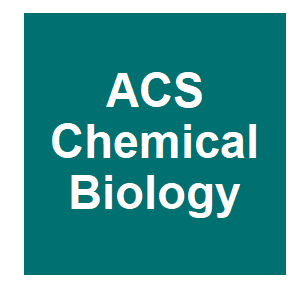
|
Gene drive: Evolved and syntheticBurt, AC, Andrea, ACS Chemical Biology, 13:343-346. 2018.
Drive is a process of accelerated inheritance from one generation to the next that allows some genes to spread rapidly through populations even if they do not contribute to—or indeed even if they detract from—organismal survival and reproduction. Genetic elements that can ... Keywords: b chromosomes, driving X, driving y, gene drive reviews, gene drive synthetic, homing endonuceases, meiotic drive, segregation distorter, toxin antidote |

|
Introduction of a male-harming mitochondrial haplotype via ‘Trojan Females’ achieves population suppression in fruit fliesWolff, JNG, N. J.; Tompkins, D. M.; Dowling, D. K., eLife, 6:e23551. 2017.
Pests are a global threat to biodiversity, ecosystem function, and human health. Pest control approaches are thus numerous, but their implementation costly, damaging to non-target species, and ineffective at low population densities. The Trojan Female Technique (TFT) is a ... Keywords: b chromosomes, driving X, driving y, gene drive reviews, gene drive synthetic, homing endonuceases, meiotic drive, segregation distorter, toxin antidote |

|
X chromosome drive in a widespread Palearctic woodland fly, Drosophila testaceaKeais, GLH, M. A.; Gowen, B. E.; Perlman, S. J., Journal of Evolutionary Biology, 30:1185-1194. 2017.
Selfish genes that bias their own transmission during meiosis can spread rapidly in populations, even if they contribute negatively to the fitness of their host. Driving X chromosomes provide a clear example of this type of selfish propagation. These chromosomes have important ... Keywords: b chromosomes, driving X, driving y, gene drive reviews, gene drive synthetic, homing endonuceases, meiotic drive, segregation distorter, toxin antidote |
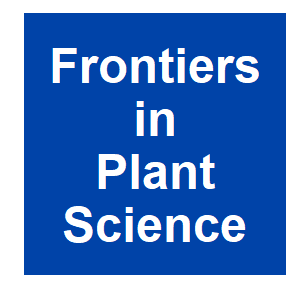
|
B Chromosomes – A matter of chromosome driveHouben, A, Frontiers in Plant Science, 8:210. 2017.
B chromosomes are supernumerary chromosomes which are often preferentially inherited, deviating from usual Mendelian segregation. The balance between the so-called chromosome drive and the negative effects that the presence of Bs applies on the fitness of their host determines ... Keywords: b chromosomes, driving X, driving y, gene drive reviews, gene drive synthetic, homing endonuceases, meiotic drive, segregation distorter, toxin antidote |

|
Intragenomic conflict produces sex ratio dynamics that favor maternal sex ratio distortersRood, ESF, S., Ecology and Evolution, 6:8085-8093. 2016.
Maternal sex ratio distorters (MSDs) are selfish elements that enhance their transmission by biasing their host's sex allocation in favor of females. While previous models have predicted that the female-biased populations resulting from sex ratio distortion can benefit from ... Keywords: b chromosomes, driving X, driving y, gene drive reviews, gene drive synthetic, homing endonuceases, meiotic drive, segregation distorter, toxin antidote |
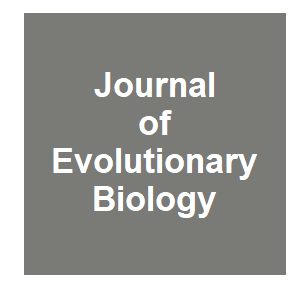
|
Occasional recombination of a selfish X-chromosome may permit its persistence at high frequencies in the wildPieper, KED, K. A., Journal of Evolutionary Biology, 29:2229-2241. 2016.
The sex-ratio X-chromosome (SR) is a selfish chromosome that promotes its own transmission to the next generation by destroying Y-bearing sperm in the testes of carrier males. In some natural populations of the fly Drosophila neotestacea, up to 30% of the X-chromosomes are SR ... Keywords: b chromosomes, driving X, driving y, gene drive reviews, gene drive synthetic, homing endonuceases, meiotic drive, segregation distorter, toxin antidote |

|
Rapid evolution of a Y-chromosome heterochromatin protein underlies sex chromosome meiotic driveHelleu, QG, P. R.; Dubruille, R.; Ogereau, D.; Prud'homme, B.; Loppin, B.; Montchamp-Moreau, C., Proceedings of the National Academy of Sciences of the United States of America, 113:4110-4115. 2016.
Sex chromosome meiotic drive, the non-Mendelian transmission of sex chromosomes, is the expression of an intragenomic conflict that can have extreme evolutionary consequences. However, the molecular bases of such conflicts remain poorly understood. Here, we show that a young and ... Keywords: b chromosomes, driving X, driving y, gene drive reviews, gene drive synthetic, homing endonuceases, meiotic drive, segregation distorter, toxin antidote |

|
The ability to gain matings, not sperm competition, reduces the success of males carrying a selfish genetic element in a flyVerspoor, RLH, G. D. D.; Price, T. A. R., Animal Behaviour, 115:207-215. 2016.
Females are expected to avoid low-quality males fathering their offspring. X chromosome meiotic drive (XCMD) makes males very low-quality mates. XCMDs are X chromosomes that, in males, cause the failure of all Y chromosome sperm, so all functional sperm carry the driving X and ... Keywords: b chromosomes, driving X, driving y, gene drive reviews, gene drive synthetic, homing endonuceases, meiotic drive, segregation distorter, toxin antidote |
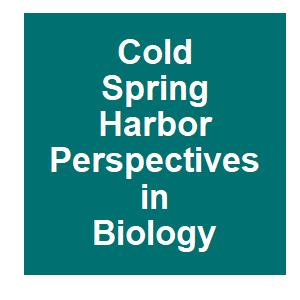
|
Sex chromosome driveHelleu, QG, P. R.; Montchamp-Moreau, C., Cold Spring Harbor Perspectives in Biology, 7:a017616. 2015.
Sex chromosome drivers are selfish elements that subvert Mendel's first law of segregation and therefore are over represented among the products of meiosis. The sex-biased progeny produced then fuels an extended genetic conflict between the driver and the rest of the genome. Many ... Keywords: b chromosomes, driving X, driving y, gene drive reviews, gene drive synthetic, homing endonuceases, meiotic drive, segregation distorter, toxin antidote |

|
On the origin of sex chromosomes from meiotic driveUbeda, FP, M. M.; Wild, G., Proceedings of the Royal Society B-Biological Sciences, 282:20141932. 2015.
Most animals and many plants make use of specialized chromosomes (sex chromosomes) to determine an individual's sex. Best known are the XY and ZW sex-determination systems. Despite having evolved numerous times, sex chromosomes present something of an evolutionary puzzle. At ... Keywords: b chromosomes, driving X, driving y, gene drive reviews, gene drive synthetic, homing endonuceases, meiotic drive, segregation distorter, toxin antidote |
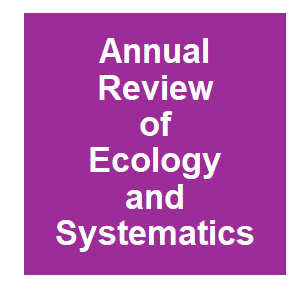
|
Genetic Control of Mosquitoes.Alphey, L., Annual Review of Entomology, 59:205-224. 2014.
Genetics can potentially provide new, species-specific, environmentally friendly methods for mosquito control. Genetic control strategies aim either to suppress target populations or to introduce a harm-reducing novel trait. Different approaches differ considerably in their ... Keywords: b chromosomes, driving X, driving y, gene drive reviews, gene drive synthetic, homing endonuceases, meiotic drive, segregation distorter, toxin antidote |

|
Biased transmission of sex chromosomes in the aphid Myzus persicae is not associated with reproductive modeWilson, ACCD, R. N.; Vorburger, C., PLOS One, 9:1-12. 2014.
Commonly, a single aphid species exhibits a wide range of reproductive strategies including cyclical parthenogenesis and obligate parthenogenesis. Sex determination in aphids is chromosomal; females have two X chromosomes, while males have one. X chromosome elimination at male ... Keywords: b chromosomes, driving X, driving y, gene drive reviews, gene drive synthetic, homing endonuceases, meiotic drive, segregation distorter, toxin antidote |
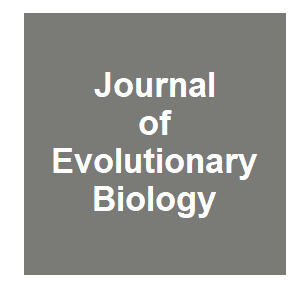
|
Sex-ratio meiotic drive and interspecific competitionUnckless, RLC, A. G., Journal of Evolutionary Biology, 27:1513-1521. 2014.
It has long been known that processes occurring within a species may impact the interactions between species. For example, as competitive ability is sensitive to parameters including reproductive rate, carrying capacity and competition efficiency, the outcome of interspecific ... Keywords: b chromosomes, driving X, driving y, gene drive reviews, gene drive synthetic, homing endonuceases, meiotic drive, segregation distorter, toxin antidote |
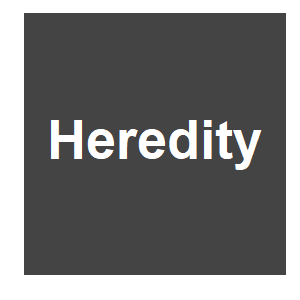
|
Male eyespan size is associated with meiotic drive in wild stalk-eyed flies (Teleopsis dalmanni)Cotton, AJF, M.; Cotton, S.; Pomiankowski, A., Heredity, 112:363-369. 2014.
This study provides the first direct evidence from wild populations of stalk-eyed flies to support the hypothesis that male eyespan is a signal of meiotic drive. Several stalk-eyed fly species are known to exhibit X-linked meiotic drive. A recent quantitative trait locus analysis ... Keywords: b chromosomes, driving X, driving y, gene drive reviews, gene drive synthetic, homing endonuceases, meiotic drive, segregation distorter, toxin antidote |

|
Meiotic drive impacts expression and evolution of X-linked genes in stalk-eyed fliesReinhardt, JAB, C. L.; Paczolt, K. A.; Johns, P. M.; Baker, R. H.; Wilkinson, G. S., PLOS Genetics, 10:e1004362. 2014.
Although sex chromosome meiotic drive has been observed in a variety of species for over 50 years, the genes causing drive are only known in a few cases, and none of these cases cause distorted sex-ratios in nature. In stalk-eyed flies (Teleopsis dalmanni), driving X chromosomes ... Keywords: b chromosomes, driving X, driving y, gene drive reviews, gene drive synthetic, homing endonuceases, meiotic drive, segregation distorter, toxin antidote |
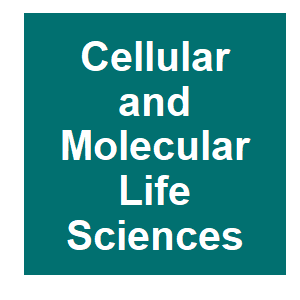
|
Evolution and biology of supernumerary B chromosomesHouben, AB-M, A. M.; Klemme, S.; Timmis, J. N., Cellular and Molecular Life Sciences, 71:467-478. 2014.
B chromosomes (Bs) are dispensable components of the genome exhibiting non-Mendelian inheritance and have been widely reported on over several thousand eukaryotes, but still remain an evolutionary mystery ever since their first discovery over a century ago [1]. Recent advances in ... Keywords: b chromosomes, driving X, driving y, gene drive reviews, gene drive synthetic, homing endonuceases, meiotic drive, segregation distorter, toxin antidote |

|
Elimination of Y chromosome-bearing spermatids during spermiogenesis in an autosomal sex-ratio mutant of Drosophila simulansYasuno, YI, Y. H.; Yamamoto, M. T., Genes & Genetic Systems, 88:113-126. 2013.
Sex ratio distortion, which is commonly abbreviated as sex-ratio, has been studied in many Drosophila species, but the mechanism remains largely unknown. Here, we report on the sex-ratio mutant of D. simulans named excess of females (exf). The third chromosomal recessive mutation ... Keywords: b chromosomes, driving X, driving y, gene drive reviews, gene drive synthetic, homing endonuceases, meiotic drive, segregation distorter, toxin antidote |

|
Natural variation of the Y chromosome suppresses sex ratio distortion and modulates testis-specific gene expression in Drosophila simulansBranco, ATT, Y.; Hartl, D. L.; Lemos, B., Heredity, 111:8-15. 2013.
X-linked sex-ratio distorters that disrupt spermatogenesis can cause a deficiency in functional Y-bearing sperm and a female-biased sex ratio. Y-linked modifiers that restore a normal sex ratio might be abundant and favored when a X-linked distorter is present. Here we ... Keywords: b chromosomes, driving X, driving y, gene drive reviews, gene drive synthetic, homing endonuceases, meiotic drive, segregation distorter, toxin antidote |
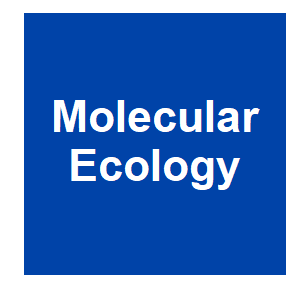
|
Local dynamics of a fast-evolving sex-ratio system in Drosophila simulansBastide, HG, P. R.; Ogereau, D.; Cazemajor, M.; Montchamp-Moreau, C., Molecular Ecology, 22:5352-5367. 2013.
By distorting Mendelian transmission to their own advantage, X-linked meiotic drive elements can rapidly spread in natural populations, generating a sex-ratio bias. One expected consequence is the triggering of a co-evolutionary arms race between the sex chromosome that carries ... Keywords: b chromosomes, driving X, driving y, gene drive reviews, gene drive synthetic, homing endonuceases, meiotic drive, segregation distorter, toxin antidote |
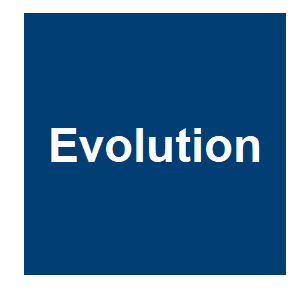
|
Local selection underlies the geographic distribution of sex-ratio drive in Drosophila neotestaceaDyer, KA, Evolution, 66:973-984. 2012.
Selfish genetic elements promote their own transmission to the next generation, often at a cost to the host individual. A sex-ratio (SR) driving X chromosome prevents the maturation of Y-bearing sperm, and as a result is transmitted to 100% of the offspring, all of which are ... Keywords: b chromosomes, driving X, driving y, gene drive reviews, gene drive synthetic, homing endonuceases, meiotic drive, segregation distorter, toxin antidote |

|
Scrambling eggs: Meiotic drive and the evolution of female recombination ratesBrandvain, YC, G., Genetics, 190:709-723. 2012.
Theories to explain the prevalence of sex and recombination have long been a central theme of evolutionary biology. Yet despite decades of attention dedicated to the evolution of sex and recombination, the widespread pattern of sex differences in the recombination rate is not ... Keywords: b chromosomes, driving X, driving y, gene drive reviews, gene drive synthetic, homing endonuceases, meiotic drive, segregation distorter, toxin antidote |

|
Reduced polymorphism associated with X chromosome meiotic drive in the stalk-eyed fly Teleopsis dalmanniChristianson, SJB, C. L.; Wilkinson, G. S., PLOS One, 6:e27254. 2011.
Sex chromosome meiotic drive has been suggested as a cause of several evolutionary genetic phenomena, including genomic conflicts that give rise to reproductive isolation between new species. In this paper we present a population genetic analysis of X chromosome drive in the ... Keywords: b chromosomes, driving X, driving y, gene drive reviews, gene drive synthetic, homing endonuceases, meiotic drive, segregation distorter, toxin antidote |

|
Rapid rise and fall of selfish sex-ratio X Chromosomes in Drosophila simulans: Spatiotemporal analysis of phenotypic and molecular dataBastide, HC, M.; Ogereau, D.; Derome, N.; Hospital, F.; Montchamp-Moreau, C., Molecular Biology and Evolution, 28:2461-2470. 2011.
Sex-ratio drive, which has been documented in several Drosophila species, is induced by X-linked segregation distorters. Contrary to Mendel's law of independent assortment, the sex-ratio chromosome (X(SR)) is inherited by more than half the offspring of carrier males, resulting ... Keywords: b chromosomes, driving X, driving y, gene drive reviews, gene drive synthetic, homing endonuceases, meiotic drive, segregation distorter, toxin antidote |

|
Segregation distortion and the evolution of sex-determining mechanismsKozielska, MW, F. J.; Beukeboom, L. W.; Pen, I., Heredity, 104:100-112. 2010.
Segregation distorters are alleles that distort normal segregation in their own favour. Sex chromosomal distorters lead to biased sex ratios, and the presence of such distorters, therefore, may induce selection for a change in the mechanism of sex determination. The evolutionary ... Keywords: b chromosomes, driving X, driving y, gene drive reviews, gene drive synthetic, homing endonuceases, meiotic drive, segregation distorter, toxin antidote |
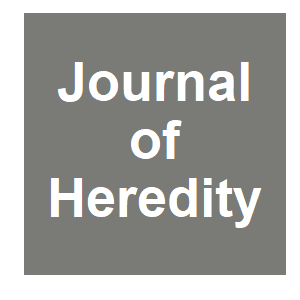
|
Segregation analysis of a sex ratio distortion locus in congenic miceCasellas, JF, C. R.; Verdugo, R. A.; Medrano, J. F., Journal of Heredity, 101:351-359. 2010.
The congenic HG.CAST-(D17Mit196-D17Mit190) (HQ17(hg/hg)) mouse strain showed a significant departure on the expected 50%/50% offspring sex ratio in more than 2400 progeny (55.7% females). The entire pedigree file included data from 13 nonoverlapping purebred generations and an ... Keywords: b chromosomes, driving X, driving y, gene drive reviews, gene drive synthetic, homing endonuceases, meiotic drive, segregation distorter, toxin antidote |

|
Segregation distortion in chicken and the evolutionary consequences of female meiotic drive in birdsAxelsson, EA, A.; Van, A. P.; Li, L.; Megens, H. J.; Vereijken, A. L. J.; Crooijmans, Rpma; Groenen, M. A. M.; Ellegren, H.; Willerslev, E.; Nielsen, R., Heredity, 105:290-298. 2010.
As all four meiotic products give rise to sperm in males, female meiosis result in a single egg in most eukaryotes. Any genetic element with the potential to influence chromosome segregation, so that it is preferentially included in the egg, should therefore gain a transmission ... Keywords: b chromosomes, driving X, driving y, gene drive reviews, gene drive synthetic, homing endonuceases, meiotic drive, segregation distorter, toxin antidote |

|
Sex ratio distorter reduces sperm competitive ability in an insectPrice, TARB, A. J.; Avent, T. D.; Snook, R. R.; Hurst, G. D. D.; Wedell, N., Evolution, 62:1644-1652. 2008.
Selfish genetic elements (SGEs) are ubiquitous in animals and often associated with low male fertility due to reduced sperm number in male carriers. In the fruit fly Drosophila pseudoobscura, the meiotic driving X chromosome "sex ratio" kills Y-bearing sperm in carrier males (SR ... Keywords: b chromosomes, driving X, driving y, gene drive reviews, gene drive synthetic, homing endonuceases, meiotic drive, segregation distorter, toxin antidote |
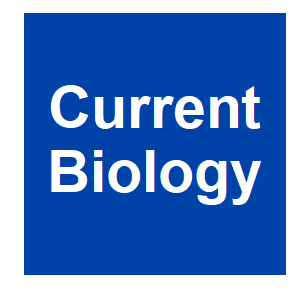
|
X chromosome driveJaenike, J, Current Biology, 18:R508-R511. 2008.
In the past 10 years, the world record for the men's 100 meter dash has declined from 9.79 to 9.74 seconds, the detection of such small differences being made possible by sophisticated electronic timing devices. If someone were to run the 100 meters in 9.73999 seconds in the 2008 ... Keywords: b chromosomes, driving X, driving y, gene drive reviews, gene drive synthetic, homing endonuceases, meiotic drive, segregation distorter, toxin antidote |
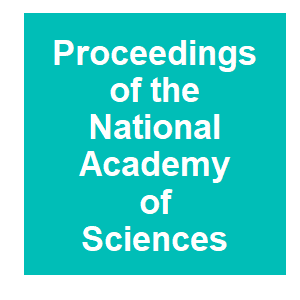
|
Chromosome-wide linkage disequilibrium as a consequence of meiotic driveDyer, KAC, B.; Jaenike, J., Proceedings of the National Academy of Sciences of the United States of America, 104:1587-1592. 2007.
Adaptation by natural selection proceeds most efficiently when alleles compete solely on the basis of their effects on the survival and reproduction of their carriers. A major condition for this is equal Mendelian segregation, but meiotic drive can short-circuit this process. The ... Keywords: b chromosomes, driving X, driving y, gene drive reviews, gene drive synthetic, homing endonuceases, meiotic drive, segregation distorter, toxin antidote |
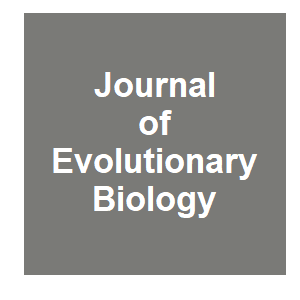
|
Fitness effects of X chromosome drive in the stalk-eyed fly, Cyrtodiopsis dalmanniWilkinson, GSJ, P. M.; Kelleher, E. S.; Muscedere, M. L.; Lorsong, A., Journal of Evolutionary Biology, 19:1851-1860. 2006.
Sex-ratio (SR) males produce predominantly female progeny because most Y chromosome sperm are rendered nonfunctional. The resulting transmission advantage of X-SR chromosomes should eventually cause population extinction unless segregation distortion is masked by suppressors or ... Keywords: b chromosomes, driving X, driving y, gene drive reviews, gene drive synthetic, homing endonuceases, meiotic drive, segregation distorter, toxin antidote |
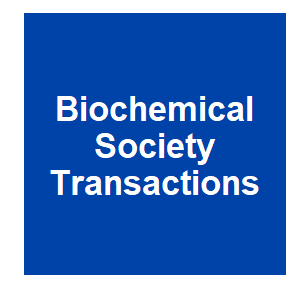
|
Sex-ratio meiotic drive in Drosophila simulans: cellular mechanism, candidate genes and evolutionMontchamp-Moreau, C, Biochemical Society Transactions, 34:562-565. 2006.
The sex-ratio trait, reported in a dozen Drosophila species, is a type of naturally occurring meiotic drive in which the driving elements are located on the X chromosome. Typically, as the result of a shortage of Y bearing spermatozoa, males carrying a sex-ratio X chromosome ... Keywords: b chromosomes, driving X, driving y, gene drive reviews, gene drive synthetic, homing endonuceases, meiotic drive, segregation distorter, toxin antidote |

|
Genetic linkage between a sexually selected trait and X chromosome meiotic driveJohns, PMW, L. L.; Wilkinson, G. S., Proceedings of the Royal Society B-Biological Sciences, 272:2097-2103. 2005.
Previous studies on the stalk-eyed fly, Cyrtodiopsis dalmanni, have shown that males with long eye-stalks win contests and are preferred by females, and artificial selection on male relative eye span alters brood sex-ratios. Subsequent theory proposes that X-linked meiotic drive ... Keywords: b chromosomes, driving X, driving y, gene drive reviews, gene drive synthetic, homing endonuceases, meiotic drive, segregation distorter, toxin antidote |

|
Sex chromosome meiotic drive in hybrid males of the common shrew (Sorex araneus)Fedyk, SB, U.; Chetnicki, W., Folia Biologica-Krakow, 53:133-141. 2005.
Patterns of sex chromosome segregation in six homozygous males of the common Shrew (Sorex araneus LINNAEUS, 1758) belonging to two chromosomal races, as well as in 16 interracial hybrids were studied. I ascd on their karyotypes the hybrids can be subdivided into two groups: (a) ... Keywords: b chromosomes, driving X, driving y, gene drive reviews, gene drive synthetic, homing endonuceases, meiotic drive, segregation distorter, toxin antidote |
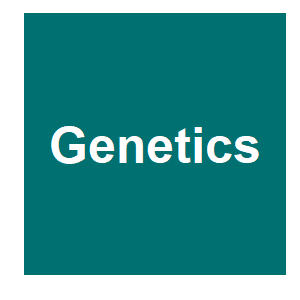
|
Evolution of autosomal suppression of the sex-ratio trait in DrosophilaVaz, SCC, A. B., Genetics, 166:265-277. 2004.
The sex-ratio trait is the production of female-biased progenies due to X-linked meiotic drive in males of several Drosophila species. The driving X chromosome (called SR) is not fixed due to at least two stabilizing factors: natural selection (favoring ST, the nondriving ... Keywords: b chromosomes, driving X, driving y, gene drive reviews, gene drive synthetic, homing endonuceases, meiotic drive, segregation distorter, toxin antidote |
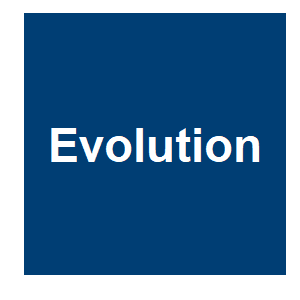
|
Meiotic drive and sex chromosome cyclingHall, DW, Evolution, 58:925-931. 2004.
Sex-linked meiotic drive is found in a broad variety of taxa, including insects, birds, and mammals. In populations of some species, we see four types of sex chromosomes segregating: normal and driving X chromosomes and susceptible and resistant Y chromosomes. A theoretical ... Keywords: b chromosomes, driving X, driving y, gene drive reviews, gene drive synthetic, homing endonuceases, meiotic drive, segregation distorter, toxin antidote |

|
To what extent do different types of sex ratio distorters interfere?Engelstadter, JM, H.; Hurst, G. D. D., Evolution, 58:2382-2386. 2004.
Within the Diptera, two different selfish genetic elements are known to cause the production of female-biased sex ratios: maternally inherited bacteria that kill male zygotes (male-killers), and X chromosomes causing the degeneration of Y-bearing sperm in males (meiotic drive). ... Keywords: b chromosomes, driving X, driving y, gene drive reviews, gene drive synthetic, homing endonuceases, meiotic drive, segregation distorter, toxin antidote |
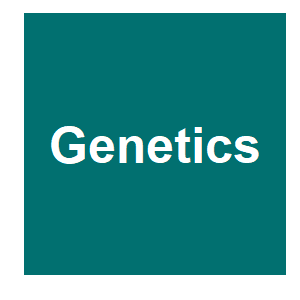
|
Sperm competition and the dynamics of X chromosome drive: Stability and extinctionTaylor, JEJ, J., Genetics, 160:1721-1731. 2002.
Several empirical studies of sperm competition in populations polymorphic for a driving X chromosome have revealed that Sex-ratio males (those carrying a driving X) are at a disadvantage relative to Standard males. Because the frequency of the driving X chromosome determines the ... Keywords: b chromosomes, driving X, driving y, gene drive reviews, gene drive synthetic, homing endonuceases, meiotic drive, segregation distorter, toxin antidote |
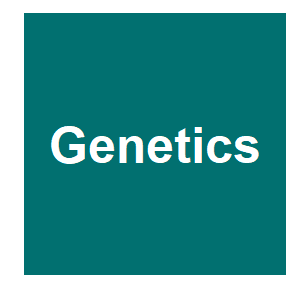
|
Sex-ratio drive in Drosophila simulans: Variation in segregation ratio of X chromosomes from a natural populationMontchamp-Moreau, CC, M., Genetics, 162:1221-1231. 2002.
The sex-ratio trait that exists in a dozen Drosophila species is a case of naturally occurring X chromosome drive that causes males to produce female-biased progeny. Autosomal and Y polymorphism for suppressors are known to cause variation in drive expression, but the X ... Keywords: b chromosomes, driving X, driving y, gene drive reviews, gene drive synthetic, homing endonuceases, meiotic drive, segregation distorter, toxin antidote |

|
Sperm development, age and sex chromosome meiotic drive in the stalk-eyed fly, Cyrtodiopsis whiteiWilkinson, GSS, M. I., Heredity, 87:17-24. 2001.
The cytological basis of X chromosome meiotic drive or sex ratio (SR) has been reported for several species of Drosophila but not for other species. Here we describe how sperm development in the stalk-eyed fly, Cyrtodiopsis whitei, influences progeny sex proportion, in order to ... Keywords: b chromosomes, driving X, driving y, gene drive reviews, gene drive synthetic, homing endonuceases, meiotic drive, segregation distorter, toxin antidote |
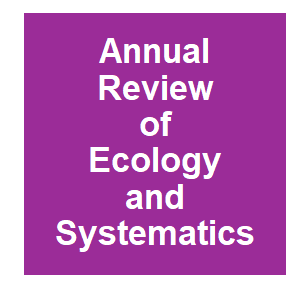
|
Sex chromosome meiotic driveJaenike, J, Annual Review of Ecology and Systematics, 32:25-49. 2001.
Sex chromosome drive refers to the unequal transmission of X and Y chromosomes from individuals of the heterogametic sex, resulting in biased sex ratios among progeny and within populations, The presence of driving sex chromosomes can reduce mean fitness within a population, ... Keywords: b chromosomes, driving X, driving y, gene drive reviews, gene drive synthetic, homing endonuceases, meiotic drive, segregation distorter, toxin antidote |

|
Sex-ratio meiotic drive in Drosophila simulans is related to equational nondisjunction of the Y chromosomeCazemajor, MJ, D.; Montchamp-Moreau, C., Genetics, 154:229-236. 2000.
The sex-ratio trait, an example of naturally occurring X-linked meiotic drive, has been reported in a dozen Drosophila species. Males carrying a sex-ratio X chromosome produce an excess of female offspring caused by a deficiency of Y-bearing sperm. In Drosophila simulans, such ... Keywords: b chromosomes, driving X, driving y, gene drive reviews, gene drive synthetic, homing endonuceases, meiotic drive, segregation distorter, toxin antidote |

|
Nonrandom segregation of the mouse univalent X chromosome: Evidence of spindle-mediated meiotic driveLeMaire-Adkins, RH, P. A., Genetics, 156:775-783. 2000.
A fundamental principle of Mendelian inheritance is random segregation of alleles to progeny; however, examples of distorted transmission either of specific alleles or of whole chromosomes have been described in a variety of species. In humans and mice, a distortion in chromosome ... Keywords: b chromosomes, driving X, driving y, gene drive reviews, gene drive synthetic, homing endonuceases, meiotic drive, segregation distorter, toxin antidote |
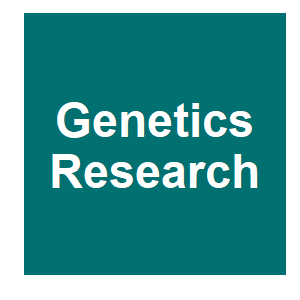
|
Models of sex-ratio meiotic drive and sexual selection in stalk-eyed fliesLande, RW, G. S., Genetics Research, 74:245-253. 1999.
Hypertrophied sexually dimorphic eye stalks have evolved independently in several families of Diptera, with the eyespan of males exceeding their total body length in some species. These structures function in intermale contests for territories and in mate attraction, the ... Keywords: b chromosomes, driving X, driving y, gene drive reviews, gene drive synthetic, homing endonuceases, meiotic drive, segregation distorter, toxin antidote |

|
How common are meiotically driving sex chromosomes in insects?Jiggins, FMH, G. D. D.; Majerus, M. E. N., American Naturalist, 154:481-483. 1999.
In summary, we argue that the hypothesis that sex chromosome; meiotic drive is common within the insects is in; fact not proved. We feel that, although it is unlikely that; it will be found exclusively in the Diptera, there is a case; to be made that the Diptera are a hot spot ... Keywords: b chromosomes, driving X, driving y, gene drive reviews, gene drive synthetic, homing endonuceases, meiotic drive, segregation distorter, toxin antidote |
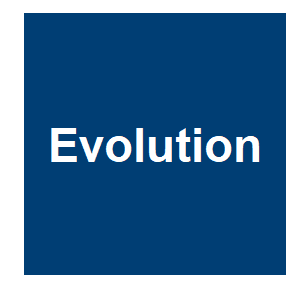
|
Suppression of sex-ratio meiotic drive and the maintenance of Y-chromosome polymorphism in DrosophilaJaenike, J, Evolution, 53:164-174. 1999.
Like several other species of Drosophila, D. quinaria is polymorphic for X-chromosome meiotic drive; matings involving males that carry a "sex-ratio" X chromosome (X(SR)) result in the production of strongly female-biased offspring sex ratios (Jaenike 1996). A survey of isofemale ... Keywords: b chromosomes, driving X, driving y, gene drive reviews, gene drive synthetic, homing endonuceases, meiotic drive, segregation distorter, toxin antidote |

|
Are Drosophila SR drive chromosomes always balanced?Carvalho, ABV, S. C., Heredity, 83:221-228. 1999.
SR chromosomes are the best-known case of sex chromosome meiotic drive. These X chromosomes cause the production of female-biased progenies in several Drosophila species; Due to their meiotic drive advantage, they are expected to spread and become fixed, resulting in population ... Keywords: b chromosomes, driving X, driving y, gene drive reviews, gene drive synthetic, homing endonuceases, meiotic drive, segregation distorter, toxin antidote |
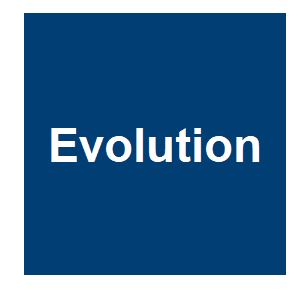
|
Evolution of driving X chromosomes and resistance factors in experimental populations of Drosophila simulansCapillon, CA, A., Evolution, 53:506-517. 1999.
Sex-ratio drive is a particular case of meiotic drive, described in several Drosophila species, that causes males bearing driving X chromosome to produce a large excess of females in their progeny. In Drosophila simulans, driving X chromosomes and resistance factors located on ... Keywords: b chromosomes, driving X, driving y, gene drive reviews, gene drive synthetic, homing endonuceases, meiotic drive, segregation distorter, toxin antidote |

|
Male eye span in stalk-eyed flies indicates genetic quality by meiotic drive suppressionWilkinson, GSP, D. C.; Crymes, L., Nature, 391:276-279. 1998.
In some species, females choose mates possessing ornaments that predict offspring survival(1-5). However, sexual selection by female preference for male genetic quality(6-8) remains controversial because conventional genetic mechanisms maintain insufficient variation in male ... Keywords: b chromosomes, driving X, driving y, gene drive reviews, gene drive synthetic, homing endonuceases, meiotic drive, segregation distorter, toxin antidote |
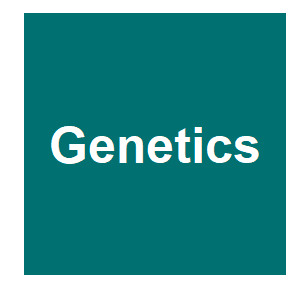
|
Polymorphism for Y-linked suppressors of sex-ratio in two natural populations of Drosophila mediopunctataCarvalho, ABV, S. C.; Klaczko, L. B., Genetics, 146:891-902. 1997.
In several Drosophila species there is a trait known as ''sex-ratio'': males carrying certain X chromosomes (called ''SR'') produce female biased progenies due to X-Y meiotic drive. In Drosophila mediopunctata this trait has a variable expression due to Y-linked suppressors of ... Keywords: b chromosomes, driving X, driving y, gene drive reviews, gene drive synthetic, homing endonuceases, meiotic drive, segregation distorter, toxin antidote |
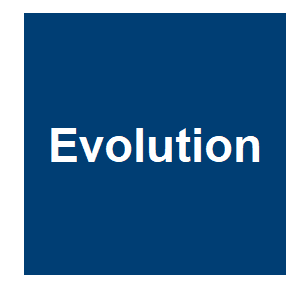
|
The sex-ratio trait in Drosophila simulans: Geographical distribution of distortion and resistanceAtlan, AM, H.; Landre, C.; Montchamp-Moreau, C., Evolution, 51:1886-1895. 1997.
The sex-ratio trait we describe here in Drosophila simulans results from X-linked meiotic drive. Males bearing a driving X chromosome can produce a large excess of females (about 90%) in their progeny. This is, however, rarely the case in the wild, where resistance factors, ... Keywords: b chromosomes, driving X, driving y, gene drive reviews, gene drive synthetic, homing endonuceases, meiotic drive, segregation distorter, toxin antidote |
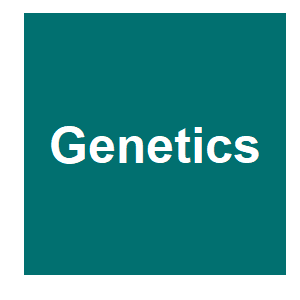
|
Sex chromosome meiotic drive in stalk-eyed fliesPresgraves, DCS, E.; Wilkinson, G. S., Genetics, 147:1169-1180. 1997.
Meiotically driven sex chromosomes can quickly spread to fixation and cause population extinction unless balanced by selection or suppressed by genetic modifiers. We report results of genetic analyses that demonstrate that extreme female-biased sex ratios in two sister species of ... Keywords: b chromosomes, driving X, driving y, gene drive reviews, gene drive synthetic, homing endonuceases, meiotic drive, segregation distorter, toxin antidote |

|
Sex-ratio distortion in Drosophila simulans – cooccurrence of a meiotic drive and a suppressor of driveMercot, HA, A.; Jacques, M.; Montchampmoreau, C., Journal of Evolutionary Biology, 8:283-300. 1995.
A sex-ratio distortion factor was found at high frequency in D. simulans strains from Seychelles and New Caledonia. This factor is poorly or not expressed within those strains which are resistant to it. Its presence was detected by crossing females from New Caledonia or the ... Keywords: b chromosomes, driving X, driving y, gene drive reviews, gene drive synthetic, homing endonuceases, meiotic drive, segregation distorter, toxin antidote |

|
Y-linked suppressors of the sex-ratio trait in Drosophila mediopunctataDecarvalho, ABK, L. B., Heredity, 73:573-579. 1994.
X-linked meiotic drive causing female-biased progenies is known to occur in nine Drosophila species and is called 'sex-ratio'. In D. mediopunctata this trait is associated with the X:21 chromosome inversion and has variable expression. We describe here a powerful Y-linked ... Keywords: b chromosomes, driving X, driving y, gene drive reviews, gene drive synthetic, homing endonuceases, meiotic drive, segregation distorter, toxin antidote |

|
Autosomal suppressors of sex-ratio in Drosophila mediopunctataDecarvalho, ABK, L. B., Heredity, 71:546-551. 1993.
The sex-ratio trait has been described as the production of progenies with excess of females due to X-linked meiotic drive in the parental males. This trait has a variable expression in Drosophila mediopunctata. We describe here the existence and chromosomal localization of ... Keywords: b chromosomes, driving X, driving y, gene drive reviews, gene drive synthetic, homing endonuceases, meiotic drive, segregation distorter, toxin antidote |
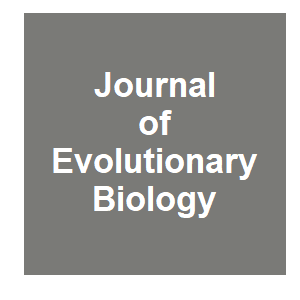
|
The evolution of unusual chromosomal systems in coccoids: Extraordinary sex-ratios revisitedHaig, D, Journal of Evolutionary Biology, 6:69-77. 1993.
Coccoids (scale insects) exhibit a wide variety of chromosomal systems. In many species, paternal chromosomes are eliminated from the male germline such that all of a male's sperm transmit an identical set of maternal chromosomes. In such species, an offspring's sex is determined ... Keywords: b chromosomes, driving X, driving y, gene drive reviews, gene drive synthetic, homing endonuceases, meiotic drive, segregation distorter, toxin antidote |

|
A comparative approach to the population genetics theory of segregation distortionFeldman, MWO, Sarah P., American Naturalist, 137:443-456. 1991.
Mathematical models of four well-known naturally occurring systems of segregation distortion are compared. These include the sex-ratio chromosome of Drosophila pseudoobscura, the Segregation Distorter (SD) complex of D. melanogaster, the t locus in Mus musculus, and the sex-ratio ... Keywords: b chromosomes, driving X, driving y, gene drive reviews, gene drive synthetic, homing endonuceases, meiotic drive, segregation distorter, toxin antidote |

|
X-chromosome segregation distortion in DrosophilaCurtsinger, JW, American Naturalist, 137:344-348. 1991.
The sex-ratio trait exhibits both discrete and continuous variation in Drosophila pseudoobscura. The discrete variation is caused by X-chromosome meiotic drive. The evolutionary forces maintaining the meiotic-drive polymorphism include strong viability selection against ... Keywords: b chromosomes, driving X, driving y, gene drive reviews, gene drive synthetic, homing endonuceases, meiotic drive, segregation distorter, toxin antidote |

|
Male sex-ratio trait in Drosophila pseudoobscura: Frequency of autosomal aneuploid spermCobbs, GJ, L.; Gordon, L., Genetics, 127:381-390. 1991.
Males with the SR X chromosome show the "sex-ratio" (sr) phenotype in which they produce almost entirely daughters. The few sons (about 1%) are invariably sterile X/O males and result entirely from nullo-XY sperm. The "male-sex-ratio" (msr) phenotype is a modified form of sr in ... Keywords: b chromosomes, driving X, driving y, gene drive reviews, gene drive synthetic, homing endonuceases, meiotic drive, segregation distorter, toxin antidote |

|
Segregation distortersLyttle, TW, Annual Review of Genetics, 25:511-557. 1991.
Segregation distorters are genetic elements that exhibit the phenomenon of meiotic drive; that is, the mechanics of the meiotic divisions cause one member of a pair of heterozygous alleles or heteromorphic chromosomes to be transmitted to progeny in excess of the expected ... Keywords: b chromosomes, driving X, driving y, gene drive reviews, gene drive synthetic, homing endonuceases, meiotic drive, segregation distorter, toxin antidote |

|
Genetics-driving genes and chromosomesCharlesworth, B, Nature, 332:394-395. 1988.
Thereare several genetic and chromosomal systems in which Mendel's first law - the equal probability of transmission of maternal and paternal alternative alleles or homologues - is violated. This phenomenon was named 'meiotic drive' in 1957 by Sandler and Novitski, who drew ... Keywords: b chromosomes, driving X, driving y, gene drive reviews, gene drive synthetic, homing endonuceases, meiotic drive, segregation distorter, toxin antidote |
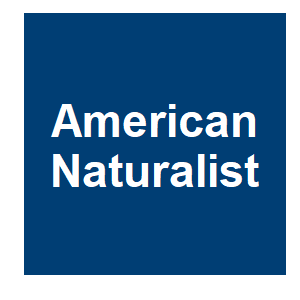
|
Sex-ration, meiotic drive, and group selectin in Drosophila pseudoobscuraPolicansky, D, American Naturalist, 108:75-90. 1974.
Sex ratio (SR) is a widespread genetic condition of the X-chromosome in Drosophila species which causes males to produce progenies consisting almost entirely of females. Results of samples from natural populations of Drosophila pseudoobscura and results of some laboratory ... Keywords: b chromosomes, driving X, driving y, gene drive reviews, gene drive synthetic, homing endonuceases, meiotic drive, segregation distorter, toxin antidote |

|
Extraordinary sex ratiosW. D. Hamilton, Science, 156:477-488. 1967.
The two sexes are usually produced in approximately equal numbers. Fisher (1) was the first to explain why, under natural selection, this should be so, irrespective of the particular mechanism of sex determination. His rather tersely expressed argument has been clarified by ... Keywords: b chromosomes, driving X, driving y, gene drive reviews, gene drive synthetic, homing endonuceases, meiotic drive, segregation distorter, toxin antidote |

|
Meiotic drive in Drosophila involving chromosome breakageErickson, J, Genetics, 51:555-571. 1965.
In ordinary genetic systems the members of a pair of unlike alleles, or of a pair of unlike chromosomes, are recovered in equal numbers among the off spring, barring complications affecting viability. Contrary to this expectation, in a number of studies it has been found that one ... Keywords: b chromosomes, driving X, driving y, gene drive reviews, gene drive synthetic, homing endonuceases, meiotic drive, segregation distorter, toxin antidote |

|
Time of temperature sensitivity of meiotic drive in Drosophila melanogasterErickson, JH, G. D., American Naturalist, 95:247-250. 1961.
In a line of Drosophila melanogaster demonstrating meiotic drive, it was found that the high recovery rate of the X-chromosome could be nearly nullified by temperature treatment. A series of experiments were carried out to determine at what stage of the life-cycle this treatment ... Keywords: b chromosomes, driving X, driving y, gene drive reviews, gene drive synthetic, homing endonuceases, meiotic drive, segregation distorter, toxin antidote |

|
A new sex-ratio abnormality in Drosophila obscuraS. Gershenson, Genetics, 13:488. 1928.
1. The sex-ratio in the normal lines of Drosophila obscura is very near to the theoretical 1 : 1. 2. Out of 19 females caught in nature, two were heterozygous for a gene which causes strong deviations in the normal sex distribution. 3. The researches made have shown that this ... Keywords: b chromosomes, driving X, driving y, gene drive reviews, gene drive synthetic, homing endonuceases, meiotic drive, segregation distorter, toxin antidote |

Contact
David O’Brochta
Foundation for the
National Institutes of Health
geneconvenevi@fnih.org
RSS

